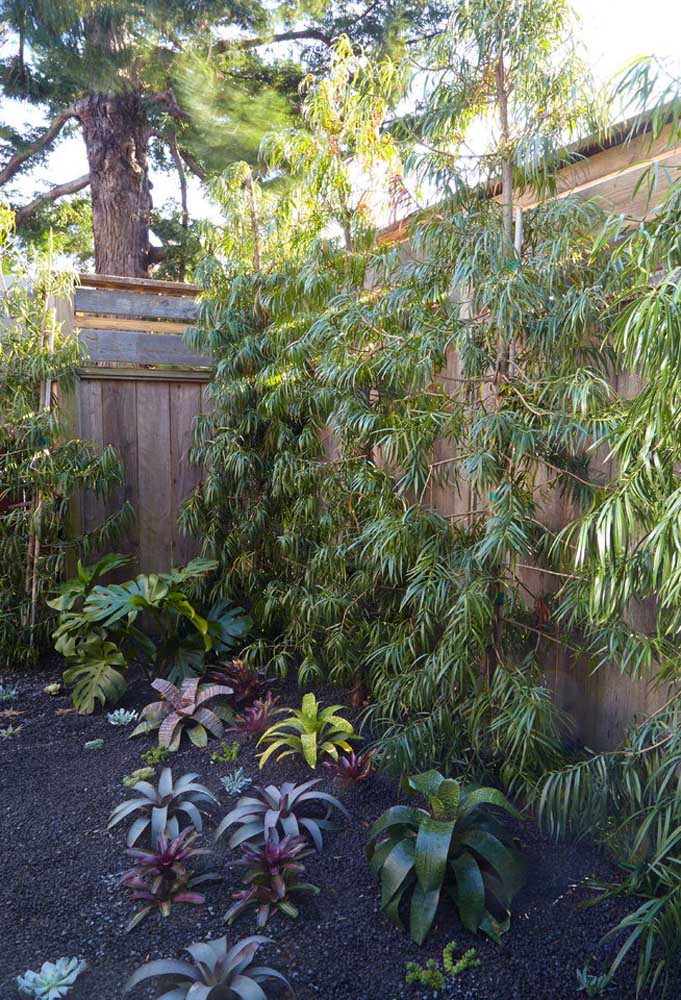Podocarp is a type of pine of Asian origin, very common in countries such as China and Japan. There, even, the pine is called Kusamaki.
Around here, the podocarpo won the affectionate nickname of Pinheiro de Buda, perhaps by reference to its Asian origin and its cultivation in Zen-style gardens.
But why are we here talking about podocarp? Simple! Because this is one of the best plant options for those who want to make a hedge or simply complement a landscape project.
Podocarp is also so versatile that it can be used in vases to form smaller compositions, but still very elegant, especially in entrances to houses and commercial establishments.
Do you want to know more about the podocarp? Then continue reading this post with us.
Podocarp Characteristics
The podocarp belongs to a large family of pines called Podocarpaceae.
This pine tree originates in Asian countries and grows very well in regions of temperate and subtropical climate. But luckily, the podocarpo was also very open to the Brazilian tropical and coastal climate, that is, you can plant the pine even if you live on the beach.
The podocarp, when planted freely in nature, can reach 20 meters in length.
The leaves of this pine are small and elongated with a very beautiful bright dark green tone.
In the spring, the podocarp reveals its flowers and small fruits, similar to red balls, which are the favorite food of many birds.
When carefully cared for, the podocarp can live for up to 50 years.
How to plant podocarp
Podocarp can be planted in pots or in beds and gardens, as long as it has an appropriate soil for its development.
And what soil is this? Podocarp prefers fertile, well-drained, slightly sandy and slightly acidic soils. Therefore, it is always recommended to apply a little limestone close to the ground.
It is also very important that the soil is well drained, so that water is not accumulated next to the plant, soaking the soil.
The simplest and easiest way to plant podocarp is by the cuttings method. To do this, just remove a branch from an adult plant and then remove excess leaves, leaving only those closest to the end.
Then bury one end of the branch in a container with soil prepared with soil, substrate and sand.
Water in sequence, but do not soak. Within a few weeks, the new plant may be transplanted to the final location.
How to plant podocarp in pot
In the case of planting the podocarp in pots, choose large containers with a capacity between 30 and 50 liters.
Make the drainage system. If the vessel has no holes, provide. Then line the bottom with gravel, expanded clay or charcoal. Then place a piece of gardening blanket or a simple TNT.
The next step is to add a thin layer of sand to the bottom of the pot. Then, complete the pot with earth halfway and only then insert the podocarp seedling.
Complete the pot with soil and press the podocarp seedling so that it sticks to the soil. Ready!
How to care for the podocarp
The podocarp is an easy-care plant and the main attention you must have is with regard to brightness.
To develop well, the podocarp needs a lot of light, if possible, direct sunlight, although it can withstand half shade.
Therefore, prefer to cultivate podocarp outdoors, such as gardens, backyards and balconies.
Podocarp watering should be done every two months, on average, depending on the local humidity and climate of the region where you live. In summer, the ideal is to water the plant every day in the late afternoon, if it does not receive rainwater.
In winter, water the podocarp every three days or so. The important thing is that the podocarp is always slightly moistened, but never soaked.
Another care that you must take in relation to the podocarp is with fertilization. Every two or three months the plant will ask for some type of fertilizer.
You can use organic fertilizers, such as earthworm humus and chicken manure, or, also, synthetic fertilizers such as NPK 10-10-10 or NPK 10-15-10.
Podocarp pruning should be done according to the landscape effect you want. If the intention is to have a long and slender plant, you can have the podocarp only on the front.
But if the idea is to have a bulky and more structured plant, you can top the pine.
Podocarp can receive maintenance pruning all year round.
Landscaping with podocarp
Podocarp is a very versatile plant for landscaping projects. The pine can be used to compose gardens of Zen style, modern, classic or with Mediterranean influence.
Podocarp can be used in its natural form or manually worked to acquire the desired shape.
You can use the podocarp alone, planted in pots and combined with other plants or, also, for the formation of hedges, planted in line and very close to each other.
Here are 30 ideas on how to use podocarp in landscape projects and get inspired:
01. Set of podocarps forming a green massif between the balcony and the yard.
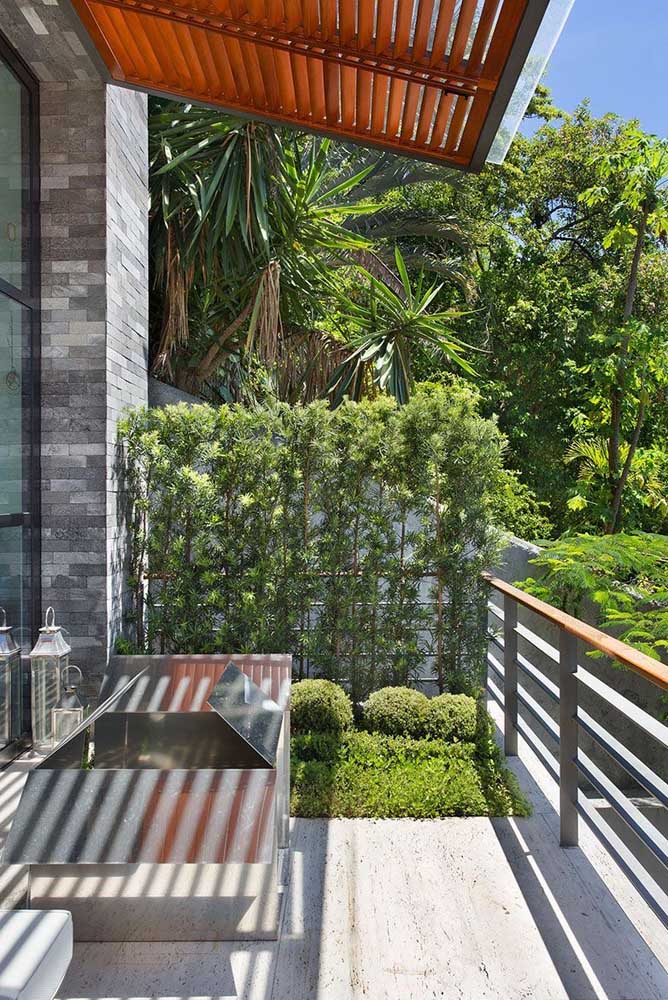
02. Podocarp wall. The idea here is to plant the pines close to the wall.
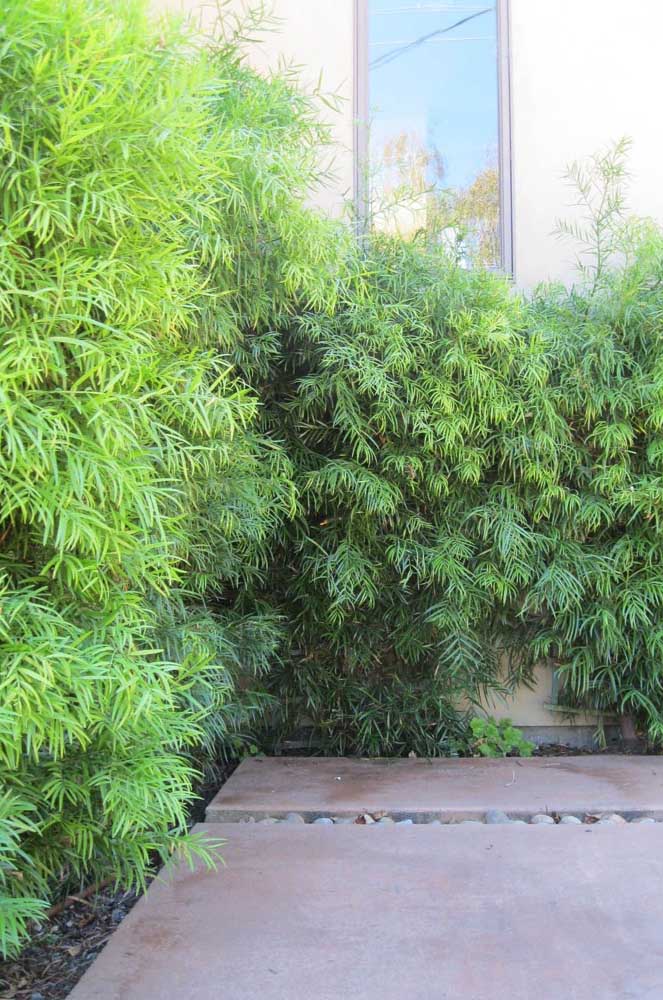
03. Podocarps allow the formation of green sculptures in the garden, you just need to prune them in any way you want.

04. Podocarpo at the entrance to the house: green elegance.
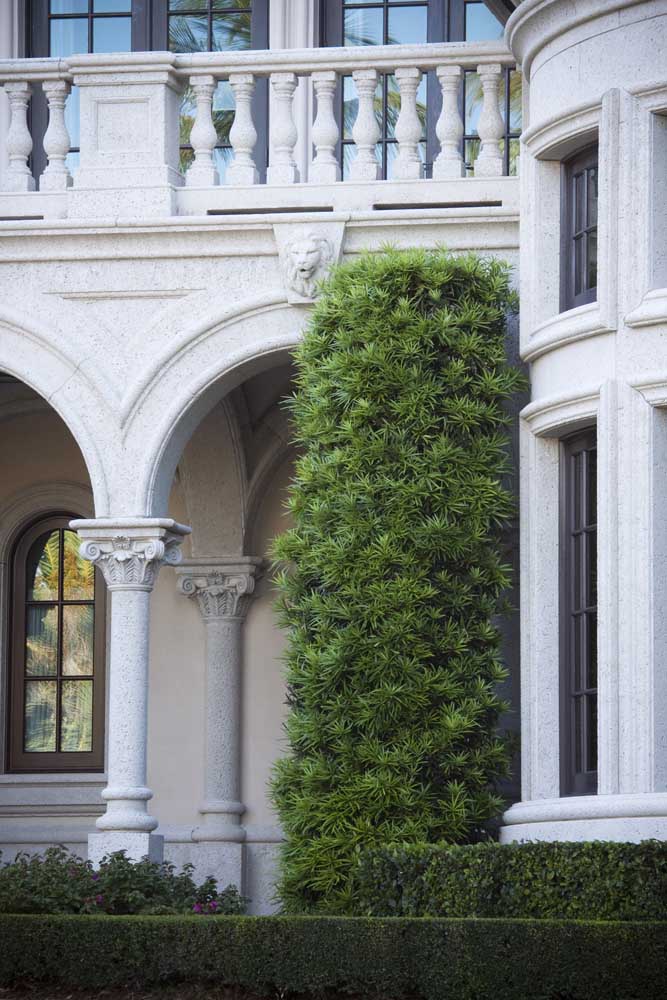
05. Without pruning, the podocarp takes on its original pine shape.

06. Podocarpo hedge adorning the entrance to the house.
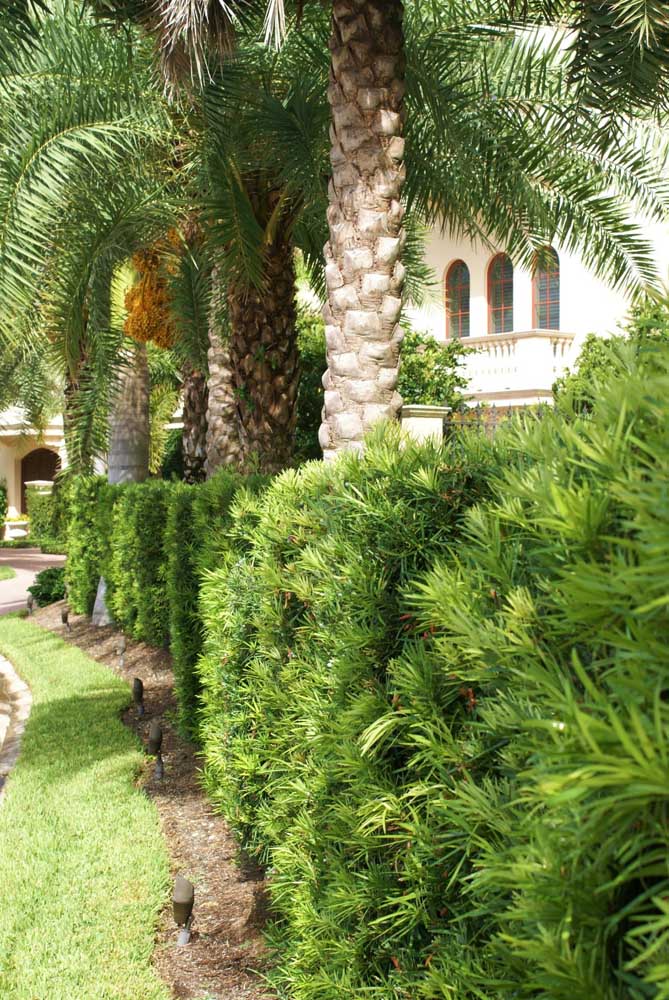
07. Already here, the podocarpos lined up hide the masonry wall.
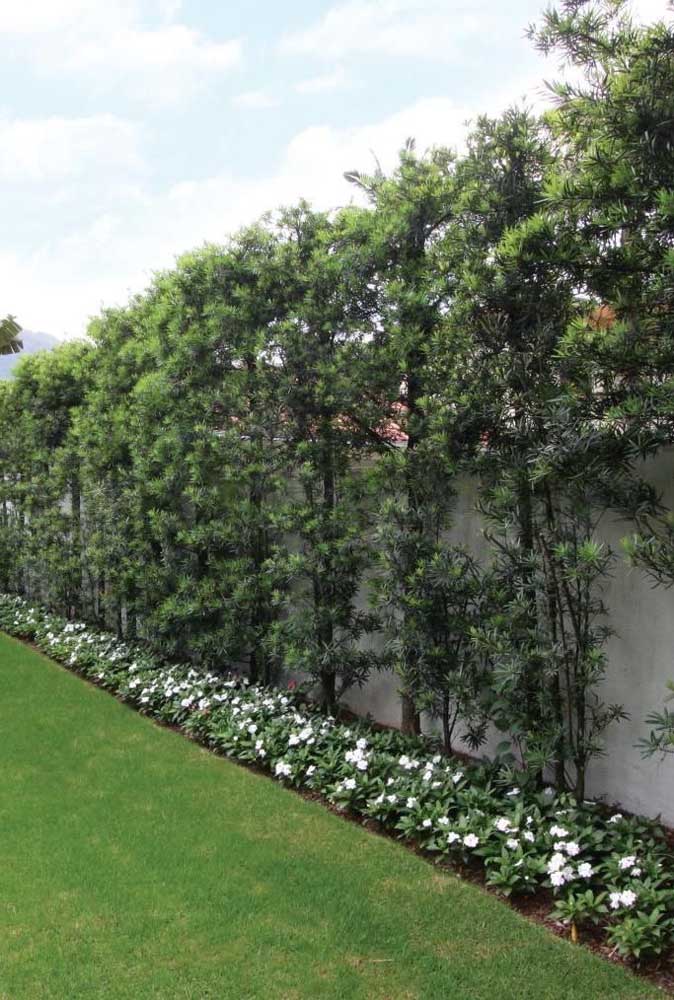
08. Garden with podocarp: rustic effect matching the house.

09. Podocarps are also great for creating partition effects and demarcating spaces.

10. Podocarpo hedge around the wooden house.
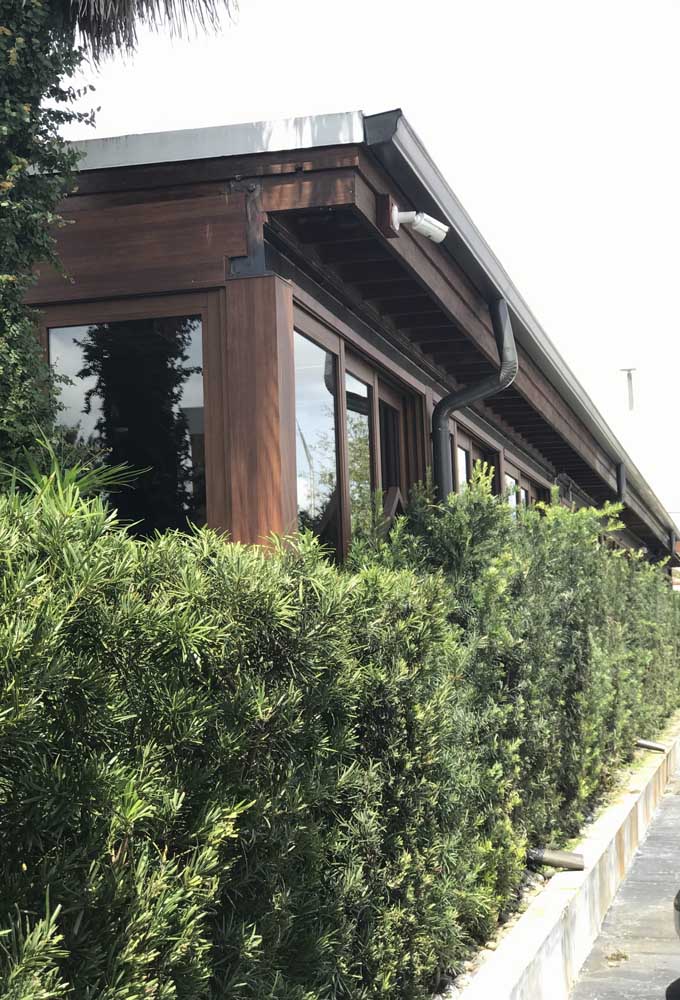
11. Garden with podocarp: here, the pine tree is the center of attention.

12. To maintain the slim and elegant effect of the podocarp, you can only do so at the front.
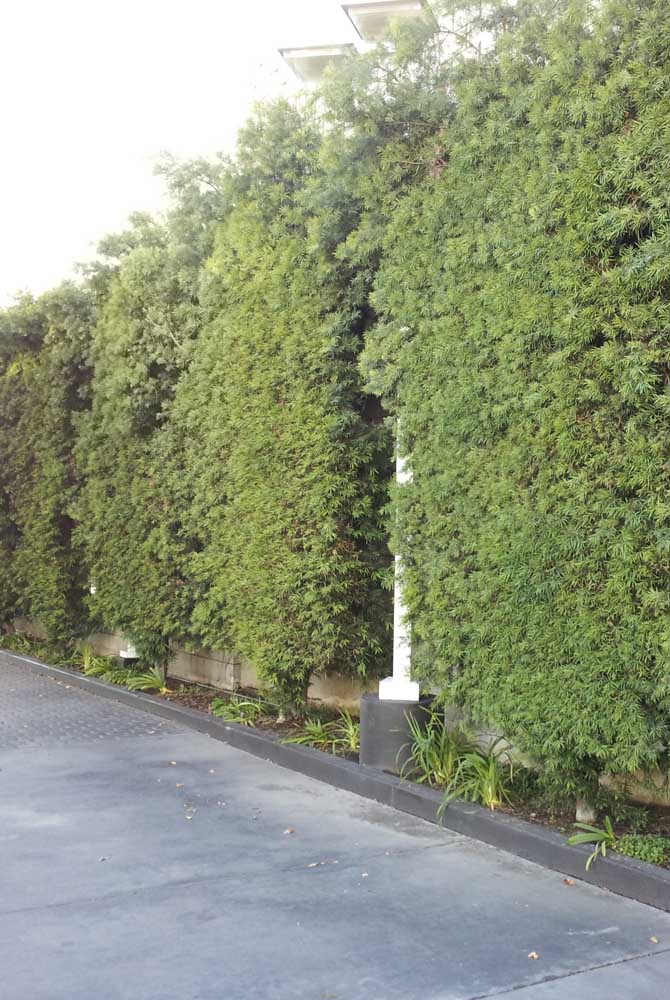
13. Podocarpos in the external area of the house complementing the landscape design.
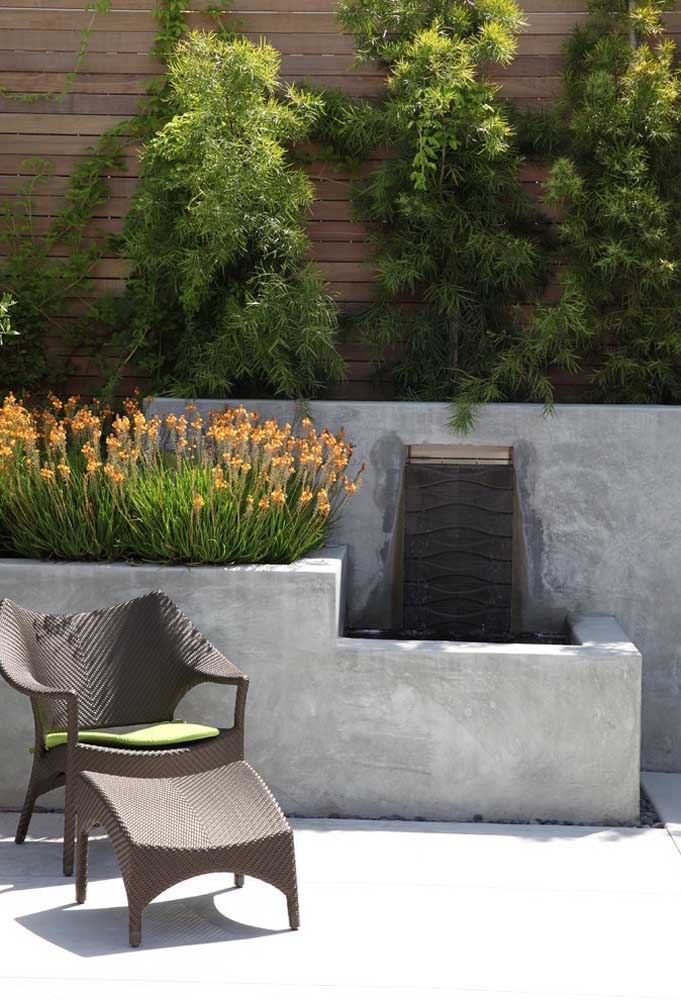
14. Here, podocarpos lead to the entrance to the house.
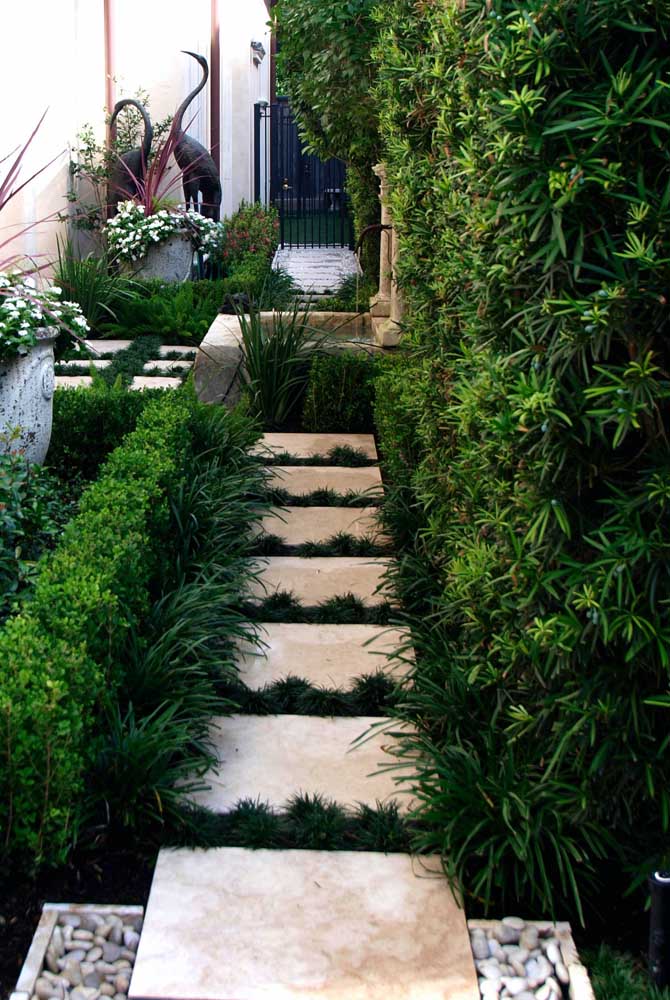
15. Podocarps are also a great option for a sidewalk plant.

16. The classic and elegant garden has the elegance of podocarpos in the background.
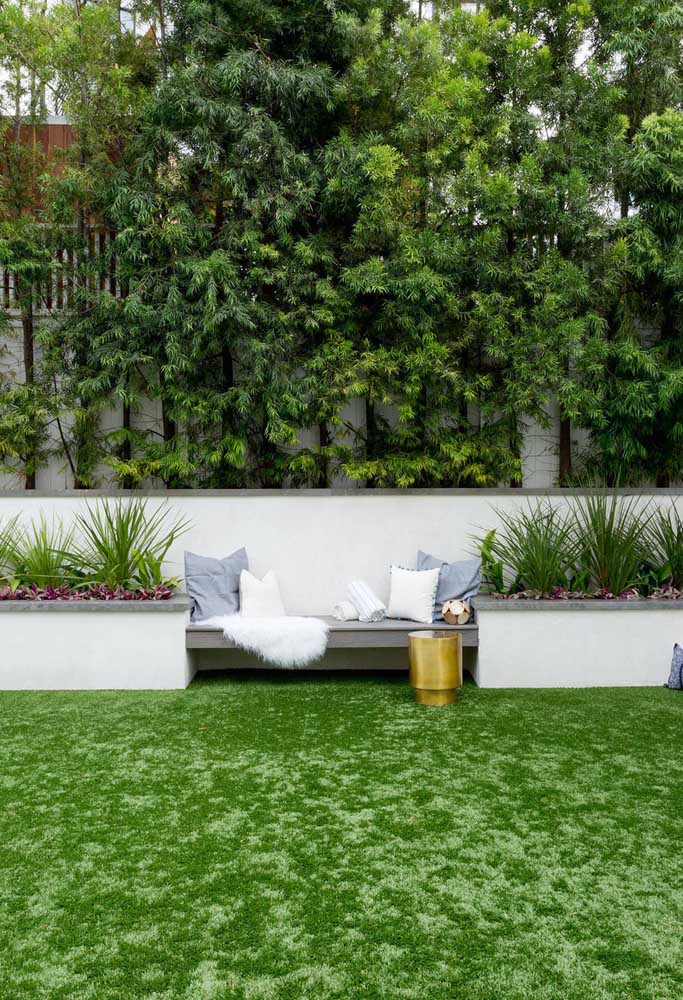
17. Backyard with podocarpos close to the wall. A great option for small spaces.
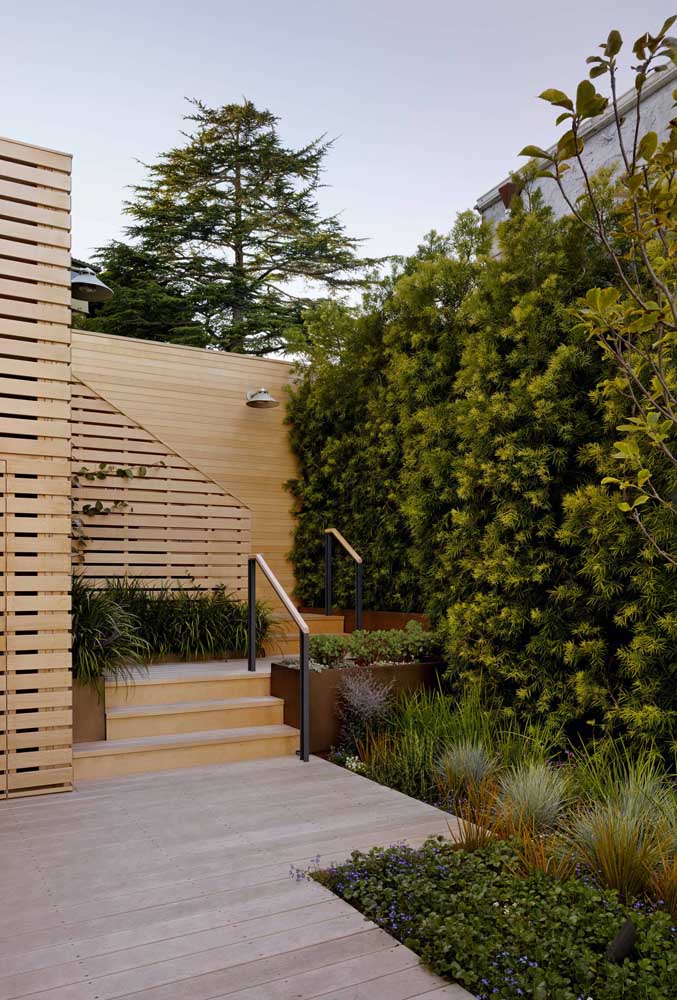
18. A combination that always works: podocarp and wood.
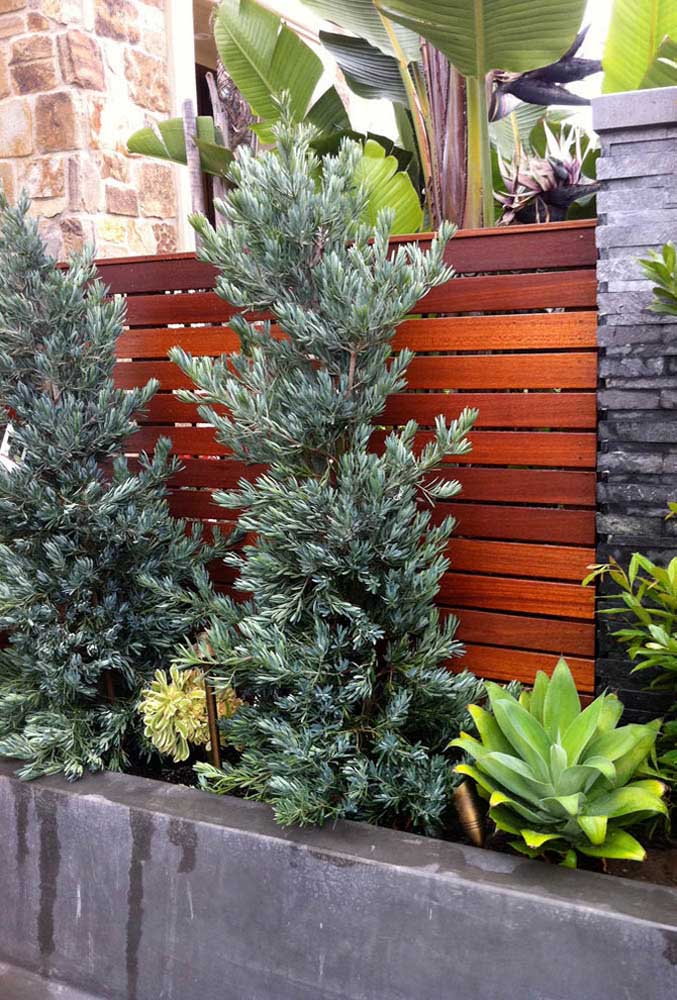
19. In this project, succulents rest in the shade of podocarps.
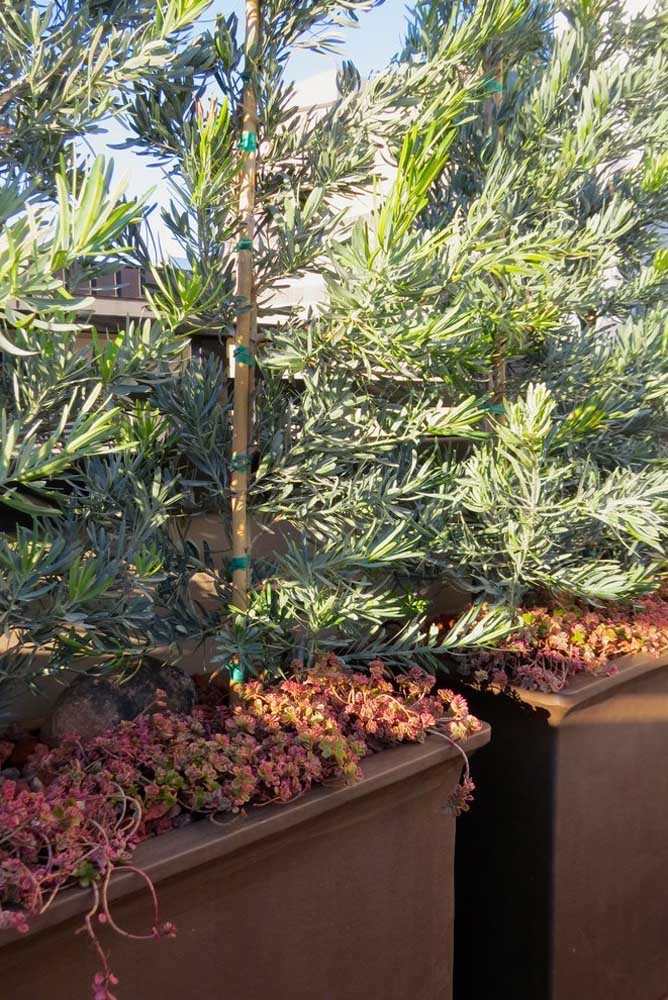
20. The podocarpos hedge can be as high as you want. Here, it takes on only a decorative effect.

21. Podocarpos to bring green to the yard.

22. Podocarp in a pot with other species.
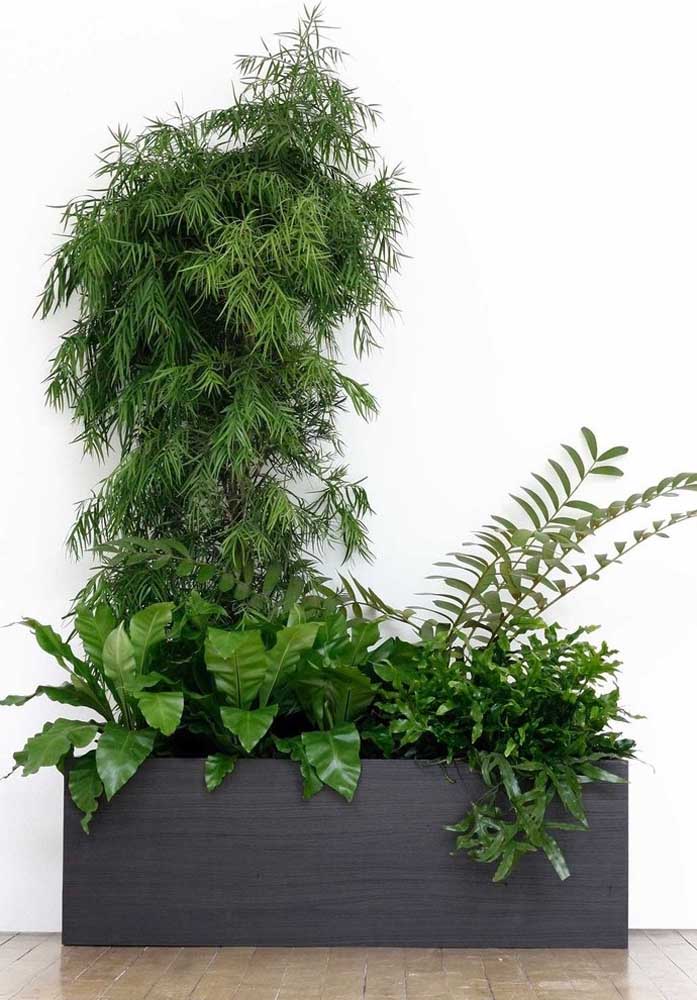
23. Podocarp garden in harmony with the modern architecture of the house.
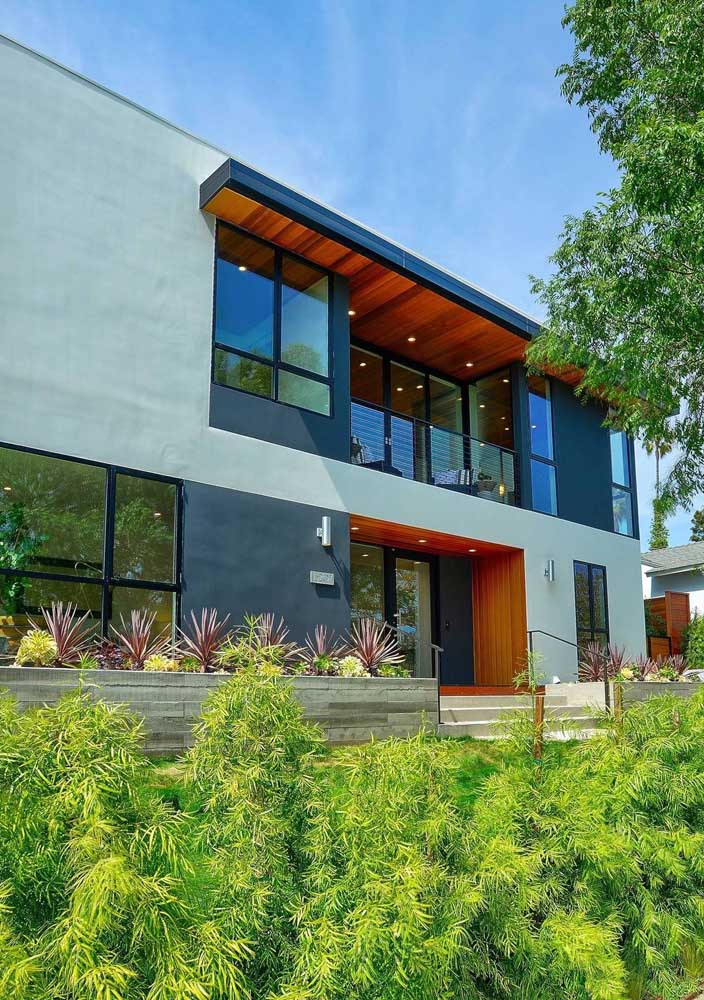
24. Rustic and cozy garden with podocarpos close to the wooden fence.

25. Two species of podocarps for the same landscape project.

26. Together, podocarpos form a perfect green massif to bring more privacy to spaces, as here, next to the hot tub.
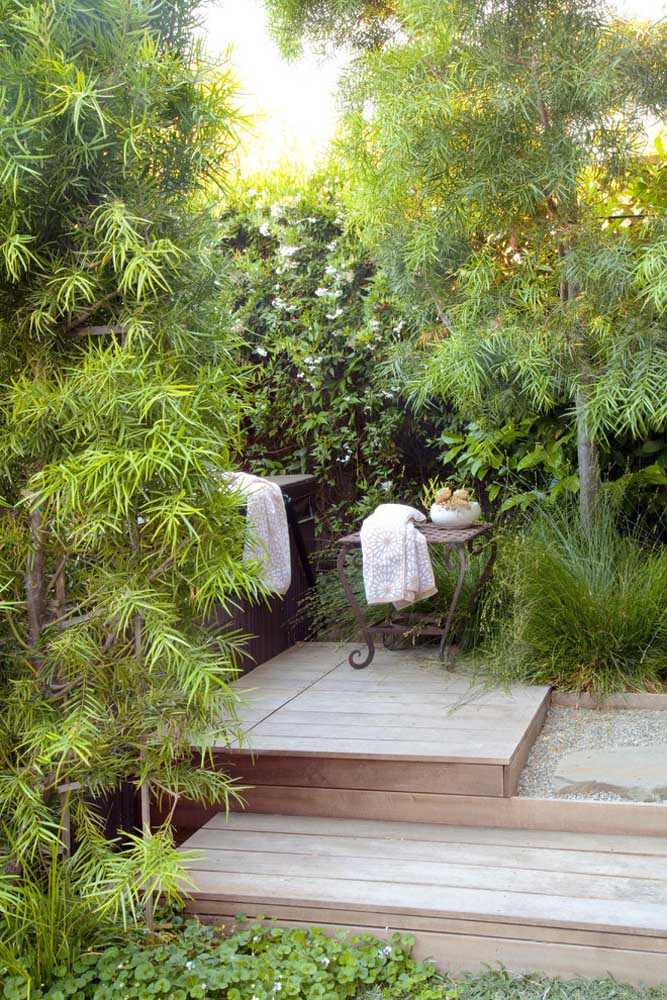
27. The white of the walls creates a beautiful contrast with the bright green of the podocarp.
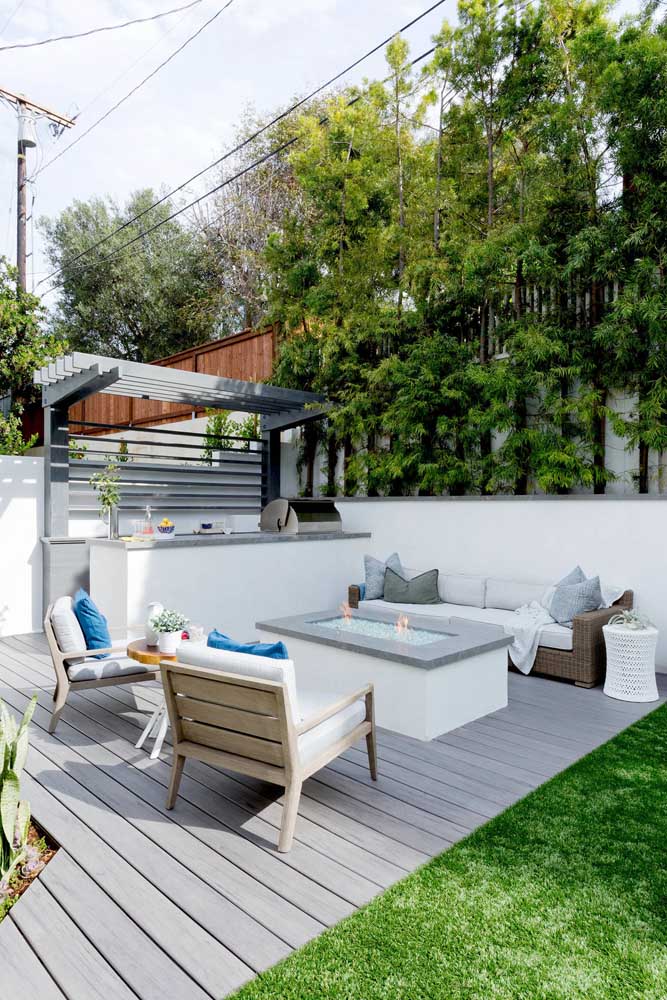
28. To make everything even more beautiful, try planting some low species near the podocarps.

29. Podocarps in the vessel: perfect for those who have little space or have no external area.

30. Podocarpos help to further close the land, increasing the privacy and security of the home.
